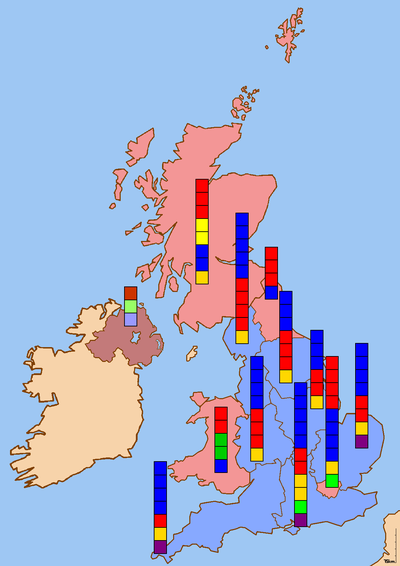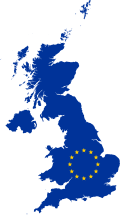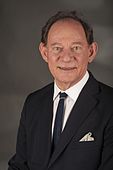
Back Europa-Parlamentsvalget 1999 i Storbritannien Danish Europawahl im Vereinigten Königreich 1999 German Elecciones al Parlamento Europeo de 1999 (Reino Unido) Spanish Élections européennes de 1999 au Royaume-Uni French Elezioni europee del 1999 nel Regno Unito Italian 1999年欧州議会議員選挙 (イギリス) Japanese Wybory do Parlamentu Europejskiego w Wielkiej Brytanii w 1999 roku Polish Eleições parlamentares europeias de 1999 (Reino Unido) Portuguese
| |||||||||||||||||||||||||||||||||||||||||||||||||||||||||||||||||||||||||||||||||||||||||||||||||||||||||||||||||||||
All 87 seats of the United Kingdom's seats in the European Parliament | |||||||||||||||||||||||||||||||||||||||||||||||||||||||||||||||||||||||||||||||||||||||||||||||||||||||||||||||||||||
|---|---|---|---|---|---|---|---|---|---|---|---|---|---|---|---|---|---|---|---|---|---|---|---|---|---|---|---|---|---|---|---|---|---|---|---|---|---|---|---|---|---|---|---|---|---|---|---|---|---|---|---|---|---|---|---|---|---|---|---|---|---|---|---|---|---|---|---|---|---|---|---|---|---|---|---|---|---|---|---|---|---|---|---|---|---|---|---|---|---|---|---|---|---|---|---|---|---|---|---|---|---|---|---|---|---|---|---|---|---|---|---|---|---|---|---|---|---|
| Turnout | 24.0% ( | ||||||||||||||||||||||||||||||||||||||||||||||||||||||||||||||||||||||||||||||||||||||||||||||||||||||||||||||||||||
| |||||||||||||||||||||||||||||||||||||||||||||||||||||||||||||||||||||||||||||||||||||||||||||||||||||||||||||||||||||
 Colours denote the winning party, as shown in the main table of results | |||||||||||||||||||||||||||||||||||||||||||||||||||||||||||||||||||||||||||||||||||||||||||||||||||||||||||||||||||||
 | |||||||||||||||||||||||||||||||||||||||||||||||||||||||||||||||||||||||||||||||||||||||||||||||||||||||||||||||||||||
| |||||||||||||||||||||||||||||||||||||||||||||||||||||||||||||||||||||||||||||||||||||||||||||||||||||||||||||||||||||
| Part of a series of articles on |
| UK membership of the European Union (1973–2020) |
|---|
 |
The 1999 European Parliament election was the United Kingdom's part of the European Parliament election 1999. It was held on 10 June 1999. Following the European Parliamentary Elections Act 1999, it was the first European election to be held in the United Kingdom where the whole country used a system of proportional representation. In total, 87 Members of the European Parliament were elected from the United Kingdom across twelve new regional constituencies.
The change in voting system resulted in significant changes in seats. The Conservatives won double the number of seats they had won in the previous European election, in 1994, while the Labour Party saw its seats reduced from 62 to 29. The Liberal Democrats saw their number of seats increase to 10 from just 2 in the previous election. The UK Independence Party (UKIP), Green Party and Plaid Cymru gained their first seats in the European Parliament.
A by-election to the British Parliament also took place on the same day in the Leeds Central constituency - Labour held the seat but with significantly reduced turnout.
The House of Commons Library calculated notional seat changes based on what the result would have been if the 1994 European elections had been held under proportional representation.[2] The notional results and seat changes are shown in the results box for this article.
It was the first European Parliament election to be held since the 1997 general election which resulted in a change of government from Conservative to Labour.
Turnout was 24%, the lowest of any member state in the 1999 election where the EU average was 49.51%. It was also the lowest of any European election in the United Kingdom, and the lowest of any member state until the 2009 election and to date is the lowest turnout for any national election in the history of the United Kingdom.[1]
- ^ a b "Previous European Parliamentary Elections – About Parliament". European Parliament. Retrieved 26 May 2019.
- ^ "European Parliament Elections June 1999 – Commons Library briefing". UK Parliament. 21 June 1999. Retrieved 5 March 2019.
Cite error: There are <ref group=lower-alpha> tags or {{efn}} templates on this page, but the references will not show without a {{reflist|group=lower-alpha}} template or {{notelist}} template (see the help page).




